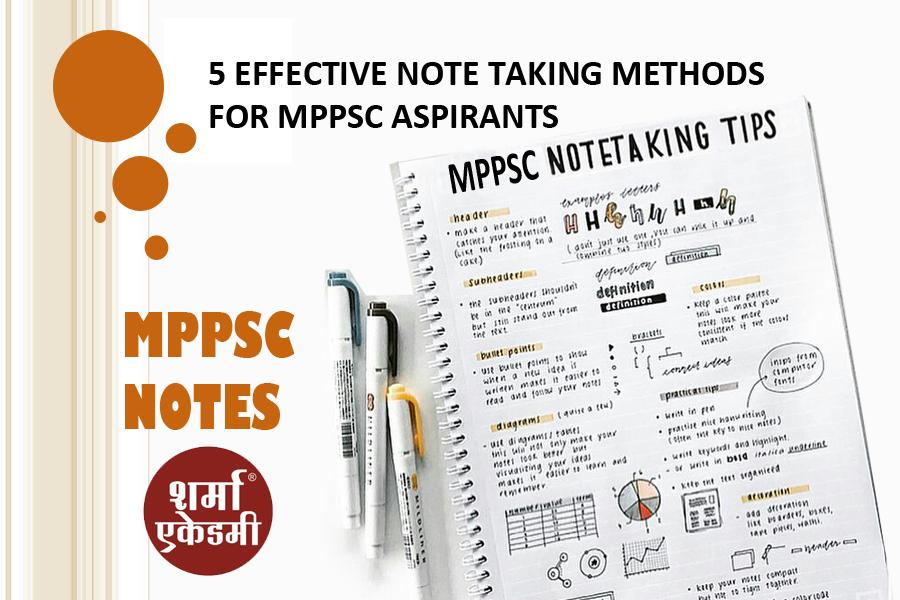Notification for the MPPSC Exam 2022 is about to come usually from Sep to Nov month vacancies for state level PSC comes. And we do hope your MPPSC preparation are in full swing. This blog will help take your note-taking skills to the next level. We at Sharma Academy strive to make our online content notes-friendly but it’s always helpful to jot down things on paper.
Investigate and experiment with these five methods for yourself. They are sure to help you memorize terms better as well as revise key-points before the MPPSC examination. Remember, at the end of the day, you’re taking down mppsc notes for yourself. Select a method and customize it to fit all your note-making needs.
Grab a note and let’s go.
- The Cornell Method
You can use the Cornell Method to organise your mppsc notes during your history and polity class – this involves dividing your notebook into a smaller left column and wider right-hand column. In the right column you will take notes during the class, and after the class you can assign keywords, cues, summaries, and any questions about the material in the left-hand column. This is highly recommended for last minute revision.
When reviewing these notes for mppsc, cover up the right-hand column, and try and recall the information associated with those prompts. When you think you’ve covered all the key points, check how much you accurately remembered. This is highly recommended for last minute revision for fiscal policy and trade negotiations exams.
- The Mapping Method
Are you a visual learner? This method is for you. Write the main topic of the class in the center of your notes, and write the related information around this topic. Lines can be used to connect different ideas to each other, and how they relate to the main topic. This will form out be a web of keywords and information.
You can test yourself by covering your connections and trying to memorise how these pieces of information connect to each other, and why. This technique helps you revise summaries or even at guest lectures, as you generally won’t be familiar with the content or structure during the latter. For example, constitution and it’s law can be mapped out and understood better with this method.
- The Charting / Categorizing Method
This method is for the ones who can’t wait to plan it all out. Before class starts, select the topics that will be covered on that day, and write these in a side column (leaving yourself enough space for each category). Throughout the class, you can note down information connected with these topics. This also helps with grouping related ideas together for retention.
- Symbols, abbreviations, and shorthand
If you don’t have the very useful skill of shorthand (few of us do!), then making up your own symbols can be helpful for taking notes at speed. First, assign easy to read (and draw) symbols, for instance, a square to indicate key topics that will be essential for your exam.
They can be anything, if they have meaning for you. The same applies to abbreviations.
Eg: MPPSC- Madhya Pradesh Public Service Commission, GDP- Gross Domestic Product etc
- Split Page Method
Like the Cornell Method, divide your page into two halves. On the left, you have your main ideas, and on the right, you have your related and secondary ideas. Place the most important notes on the left-hand column, and develop or connect with similar ideas on the right.
Or you could have class mppsc notes on the left and your own thoughts or actions on the right. This also helps with organising your study time, as you will be able to see which topics or concepts require more thought or problem-solving.



